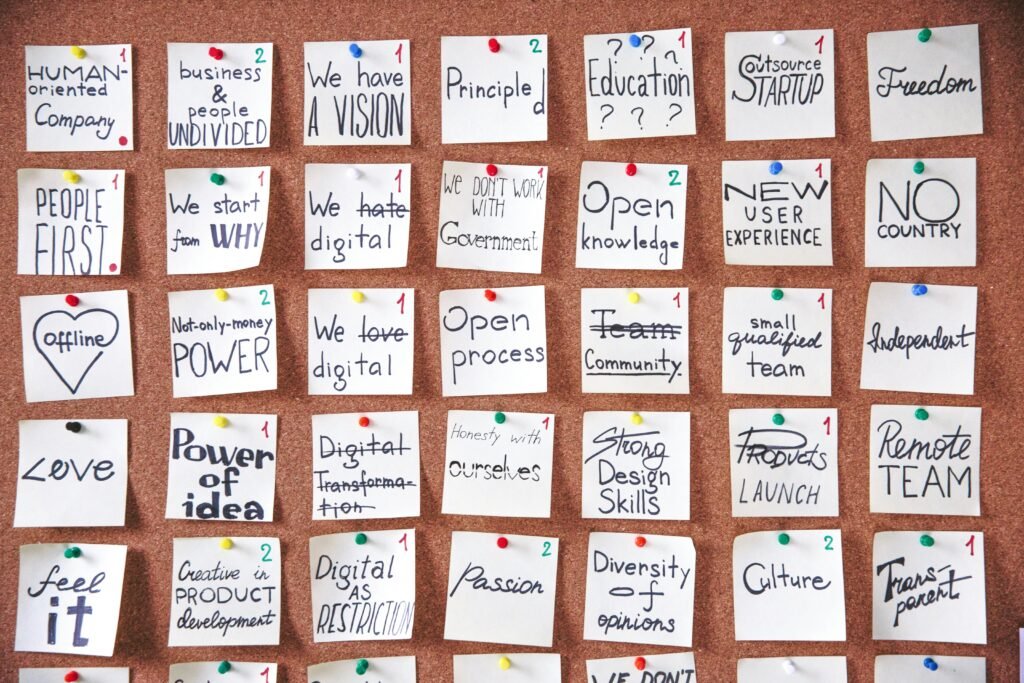Building SYSTEMS Over Goals Leads to Greater Success
When it comes to achieving success, the debate between setting goals and building systems often arises.
Building systems instead of setting goals is a more sustainable and effective strategy for personal and professional growth.
Unlike goals, systems focus on consistent progress, ensuring long-term success without the burnout that often accompanies traditional goal-setting methods.
In this blog, we’ll explore the limitations of goal-oriented thinking, why systems are a superior alternative, and practical ways to design systems that align with your ambitions.
This post contains affiliate links, which means I may earn a small commission at no extra cost to you if you purchase through them. I only recommend products I truly love and think you’ll vibe with too. Check out our privacy policy and disclosure here.
The Limitations of Goal-Oriented Thinking
Goal-setting has its merits, but it often falls short of delivering long-term success.
People set goals to achieve specific outcomes, yet many struggle to reach them.
Building systems instead of setting goals helps eliminate common pitfalls like burnout and anxiety.
Why Goals Are Often Ineffective
Goals emphasize outcomes, not the process.
For instance, setting a goal to “write a book in a year” sounds motivating but doesn’t provide actionable steps.
This lack of structure leaves people overwhelmed and prone to procrastination.
Moreover, research published in Tutoroot Personalised Learning reveals that many fail to achieve their goals due to unrealistic expectations, boredom, or loss of motivation.
Without a clear roadmap, goals can feel more like daunting challenges than achievable milestones.
Why Building Systems Instead of Setting Goals Works
Systems focus on the “how” rather than the “what.”
When you prioritize systems, you’re building consistent habits that naturally lead to success over time.
This approach is liberating and shifts the focus to actions you can control daily.
Systems Focus on Progress, Not Perfection
For example, instead of setting a goal to “lose 20 pounds,” create a system that incorporates daily movement and healthy eating.
This structure ensures steady improvement while avoiding the stress of fixed outcomes.
James Clear, the author of Atomic Habits, explains it well: “You do not rise to the level of your goals; you fall to the level of your systems.”
A well-designed system creates a pathway to success that feels manageable and rewarding every step of the way.
How to Build Systems for Sustainable Success
Creating systems doesn’t have to be complicated. Here are three practical steps to build systems that replace traditional goal-setting.
Step 1: Define Your Process
Identify daily or weekly actions that align with your ambitions.
- Example: Instead of aiming to “save $10,000 in a year,” automate savings by setting up recurring transfers to a dedicated account.
This system removes decision fatigue and ensures progress without requiring constant effort.
Step 2: Prioritize Small, Consistent Actions
Small habits lead to big results. A system of regular, manageable actions is more effective than overwhelming tasks.
- Example: If you want to improve fitness, commit to walking 10,000 steps daily rather than focusing on running a marathon.
Step 3: Adjust and Reflect Regularly
Systems allow flexibility and growth. Review what’s working and make adjustments as needed. Unlike rigid goals, systems accommodate change without derailing progress.
Applying Systems Thinking to Different Areas of Life
Systems can be tailored to any aspect of life. Here’s how:
Work and Career
Goal-Oriented Approach: “I want a promotion this year.”
System-Oriented Approach: Dedicate time each week to improving your skills, networking, and contributing measurable value to your projects.
Health and Wellness
Goal-Oriented Approach: “I want to run a marathon.”
System-Oriented Approach: Develop a daily routine of exercise, strength training, and balanced nutrition to improve overall fitness.
Personal Development
Goal-Oriented Approach: “I want to read 50 books this year.”
System-Oriented Approach: Commit to reading 20 minutes daily to develop a habit of consistent learning.
The Benefits of Building Systems Instead of Setting Goals
1. Continuous Feedback: Systems allow you to track progress daily, providing small wins that build momentum.
2. Reduced Pressure: By focusing on the process, you eliminate the stress of fixed deadlines and binary success/failure outcomes.
3. Adaptability: Systems are flexible and can evolve to fit changing circumstances, unlike rigid goals.
Embrace Systems for Long-Term Success
Building systems instead of setting goals enables you to focus on daily progress, fostering sustainable growth and reducing the pressure of fixed outcomes.
When you shift your perspective, success becomes less about achieving a single milestone and more about creating habits that improve your life continuously.
Ask yourself, “What system can I create today to guide me toward where I want to be?” By focusing on systems, you’re setting yourself up for a lifetime of success and fulfillment.











No Comment! Be the first one.